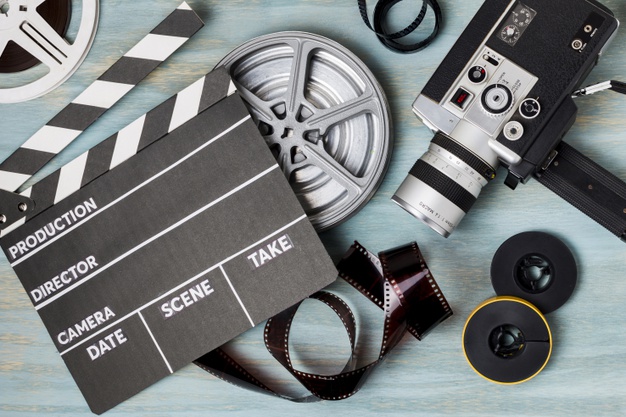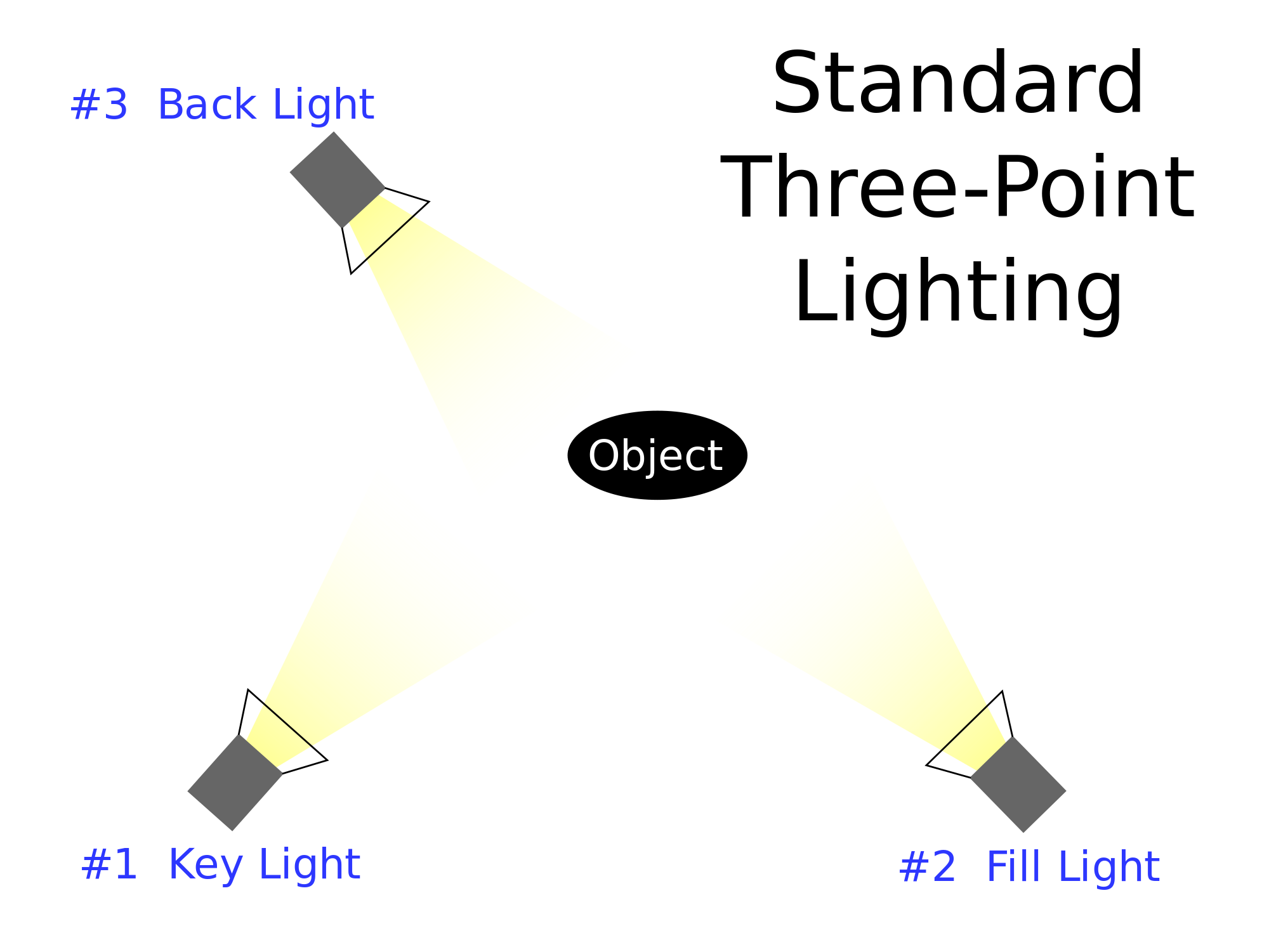Knowledge of proper lighting is very crucial in the journey of creative film making. It helps in portraying emotions with the images on the screen and in the scene. If shooting project is on the budget, that means the lighting gears would be limited. There are several cinematography tips for the beginners, which they need to know about lighting, to have the right cinematic look within the budget constraints.
Listed below are the cinematography techniques of film lighting –
1) The three-point lighting setup
The basic lighting in the film is the three-point lighting setup that helps to shape your subject and set them apart from the background. Your film lighting equipment needs to face the subject of the shot from three directions that are front, back, and side.
- Key light- It is the light that registers most prominently in your photo or picture frame. It is responsible for illuminating the brightest part of the frame.
- Full lights- These are responsible for filling in the shadows of the frame.
- Backlights – They gives an edge light to the rear portion of the subject in the frame. These lights shoot down from a higher angle during the shot.
The key and fill lights flank the camera, based about 60 degrees on an axis from the camera.
2) Cinematic types of film lighting
A cinematographer is an artist who is responsible for guiding the viewer’s eyes using the lighting equipment within the frame via his/ her creative decisions. The cinematographer is responsible for deciding the props and the scene elements that need to be emphasized. He/she decides upon the perspective and the lights that should be viewed by the audience in a particular scene. He/she is responsible for how characters differ from one frame to another using lighting, which emotions should express through the harshness of light and its colors.
For making the design decisions on the above matters, the cinematographer has to plan and execute the lighting setup in a frame so that it can create the desired effect. And accordingly, lighting pieces of equipment are set up.
3) Planning the soft film lighting
How an emotion has to convey in a scene, the cinematographer uses hard or soft lighting in the frame. These sources are concerned with how significant a light source is and how it affects shadow on the subject of the frame.
Different types of film lighting include:-
- Higher key light
This is an effect created by taking the key light at height and using fill lights generously in the frame. It keeps the lighting bright and balanced in the frame creating almost no shadows. This act balancing the light from an object to an object is known as lighting ratio in the cinematography world.
- Diffused over lighting
During conversation close up, the light source is softened using diffusion materials like gels or lanterns that reduces shadows.
4) Hard film lighting
To create dramatic effects such as suspicious or volatile characters, the smaller light source, including bright sunlight, are used that heightens the shadow on the object.
- Kicker light with soft fill
This effect helps to create a right rim of light as the backlight hits the side of your subjects face and a very soft fill light keeps the face gently illuminated.
- Low key light
This lighting refers to minimizing or eliminating the fill light from the frame that enables it keeping shadowy to create the dramatic, scary, or suspicious effect.
5) Motivated lighting
Many times cinematographer has to consider where the light in a set will come from. At times they may choose to take the practical lights existing in the location and elevate their effect, which is called as motivated lighting. If this kind of lighting in the film is done correctly and artistically, then audiences stay unaware of the lighting works.
- Practical set lighting
Through their creativity and skills, cinematographer makes use of existing lamps and lights sockets around the set in the frame to light a scene. This is referred to as practical lighting and is useful when a wider portion of the set has to be revealed. Some additional soft and balance lights can be added to bring in the desired effects.
6) Natural film lighting
Cinematography tips for beginners are incomplete unless they know how to use natural film lighting already available on the location by modifying them as per the requirement.
Before actually getting the shoot started, the cinematographer can take the camera to the location to check how well the natural lights hold up in the setup. This will help them to decide how much or what kind of additional lights they might need and what adjustments would be required. They can decide upon the bounce boards for reflecting the lights or black flags for blocking the same on the location.
Although this requires a significant amount of flexibility and preparation beforehand, it usually renders outstanding results during the shoot.
The best cinematography tips for film lighting in a nutshell
Like every other artistic discipline, choosing the film lighting needs individual interpretation of directing the photography in the film. The techniques mentioned above are meant to guide the beginners for creating the desired impacts in the imagery. The number of lights in a frame can help to determine the overall look of the shot, so experimenting with the lights and darkness/shadows is a ground-rule to bring different characteristics of the subject in the frame.

